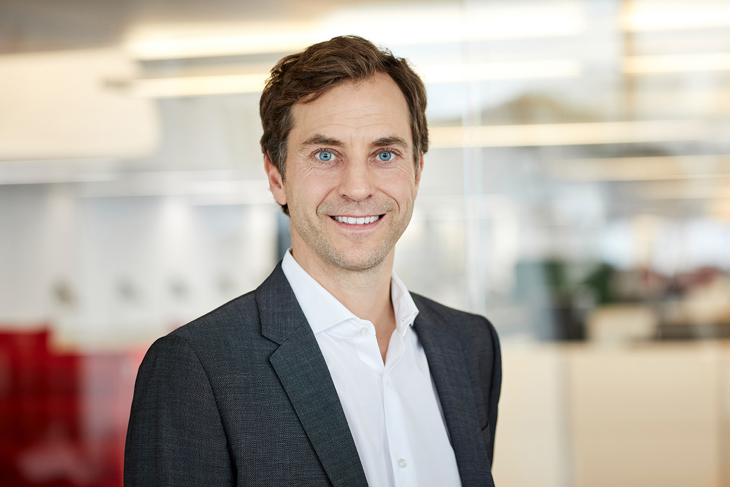
Christian Dahmen: We managed to operate mostly unscathed through last year even though our breadth of business activities meant that most segments had to deal with consequences arising due to Covid-19.
To give you an idea: NewRe has a pan-European non-life reinsurance book with circa CHF800m (£615m) in premium and a traditional life reinsurance book with around CHF8bn (£6.15bn) present-value of claims.
“We effectively had to adapt overnight from an almost-entirely
office-based entity to a virtual one.”
On the more complex life side, we have a sizeable book of derivatives backing the financial guarantees of variable annuity type policies. Finally, we hold around CHF3.5bn (£2.7bn) on the investment side, CHF450m (£346m) of which are invested in emerging market (EM) government bonds.
Each of these four segments had to deal with either the market turmoil or COVID-related loss exposures.
As with most companies, we effectively had to adapt overnight from an almost-entirely office-based entity to a virtual one. This led to some steep learning curves and some changes to processes. But we are proud and relieved to have dealt with this very well.
Christian: Looking globally, a lot hinges on the COVID-19 containment measures over the next months and on the speed of deployment of vaccines. If these are successful and timely, economic rebound could begin at the end of the first half 2021.
However, frequent and ongoing discovery of mutated virus variants, their potential resistance as well as slow vaccination deployments in so many countries may delay this recovery further.
For global (re)insurers, I expect to see a delicate balancing act: on the one hand, loss reserves for 2020 still carry an immense uncertainty. This is illustrated by the fact that for most reinsurers, 60% or more of the COVID losses for 2020 are IBNR (incurred but not reported) losses.
“I expect to see discussions on growth opportunities, deploying risk capital on the underwriting side, while staying close to the current exposures.”
On the other hand, reinsurance market conditions across the board are the best they have been for many years. So I expect to see strategic discussions on seizing growth opportunities, deploying risk capital on the underwriting side, while staying close to the current exposures and managing the dynamic situation around these.
On the investment side, deploying additional risk capital seems a less common route followed across the market, because extending the underwriting appetite looks considerably more attractive in the current market environment.
Nevertheless, I am convinced market participants will look hard into optimising their investment returns further, albeit rather with constant risk capital consumption.
Christian: Building on the expertise of our group internal investment manager MEAG and given our mid-sized balance sheet, our current approach is a measured investment in emerging market instruments.
Within the vast EM space, we deem three indicators as particularly relevant for an investment's attractiveness. On the macro-economic side, we see the real yield differential as well as the debt-to-GDP ratio as important KPIs. These are complemented by economic growth and demographic forecast for the investment horizon considered.
Christian: Very literally to your "as people go back to work" point: Employers now have a unique chance to strengthen staff engagement by shaping their ‘new way of work’ post-COVID.
My vision is that – when we return to the office – we will boost collaboration and productivity by smartly balancing virtual working with working on site. On-site days will be deliberately chosen for team work, brainstorming and achieving the team glue! Whereas virtual working will be the preferred option for ‘deep work’ and client calls.
Christian: In my view a very relevant component to such a restart is a dialogue on the role of (re)insurance for societies and economies.
Since the beginning of the coronavirus crisis, the (re)insurance industry has used its financial capacity and expertise to help mitigate losses affecting our private lives, through policies in life and health, workers compensation or travel PA/travel cancellation.
“Pooling solutions must be found for these currently
uninsured loss exposures.”
As sizeable as it will be, the total COVID-19 loss figure including uninsured exposures is many times higher and it dwarves the loss potential of most other accumulation insurance risks such as natural catastrophes.
Therefore, pooling solutions must be found for these currently uninsured loss exposures and the role of the (re)insurance industry needs to be more clearly defined in the future.
Given the size of this gap, the lack of diversifiability and the direct exposure (re)insurers already face, the industry's most adequate contribution should be via knowledge transfer and by acting as a service provider for pandemic pools.